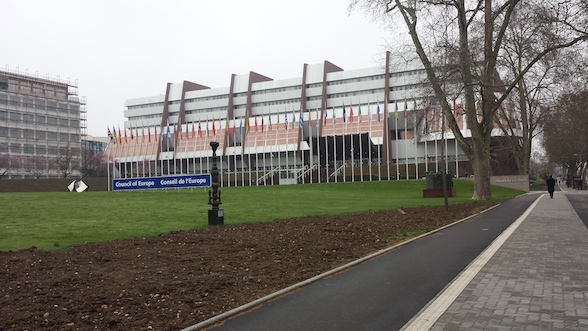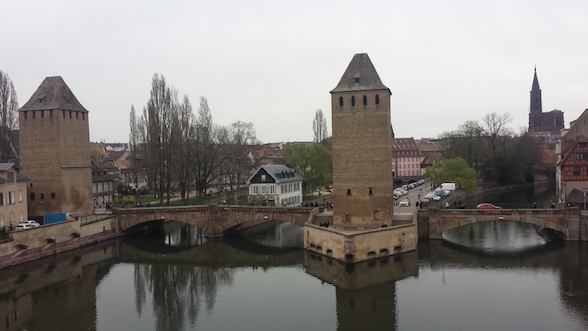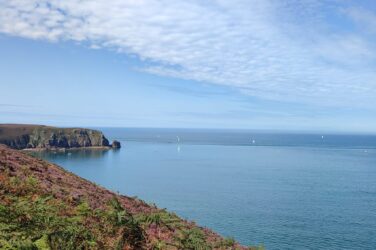Strasbourg – the land once caught between two major European powers – France and Germany – is now a home to a major entity, Europe. The city of Strasbourg, also known as a “town at the crossing of roads”, beautifully explains the to-and-fro struggle of the French and German nations. For this and many other reasons, Strasbourg should definitely be on your agenda of places to visit!
History
Strasbourg has a long and rich history, which contributes to its charm and diversity. The first known settling of Strasbourg dates back to the 12th century BC by Celts. During this time, it was established as a military fort by Nero Claudius Drusus, a Roman politician and military commander, which was to be used to invade Germania. In the later years, the city experienced two deadly plagues. The Dancing plague of 1518 is one of history’s most interestingly bizarre plagues. It all started when a woman started passionately dancing on the streets. Within a month, she was joined by many others, mainly women. These dancers were dancing uncontrollably and agonisingly calling for help. Although there are many modern theories that are put forward for their behaviour, no one (past or present) understood why these people danced to their deaths (400 people died as a result of exhaustion, heart attacks and other related ailments.).
Strasbourg was then annexed by Louis XIV in 1681 and consequently became a French city, beginning a to-and-fro between France and Germany’s that has spanned centuries. Strasbourg was heavily bombarded during the Franco-Prussian War of 1870 to 1871 and consequently also annexed to Germany in 1871 under the Treaty of Frankfurt. However; Strasbourg was then given back to France in 1919 following the Treaty of Versailles, not an easy adjustment for the Alsatians since the locals were linguistically pressured by the French authorities.
Strasbourg was annexed to Germany in 1940 and upon Hitler’s order began major attempts to transform it into a large major city, which gave way to a “Germanisation” process in the region, meaning French was completely banned and it was a punishable offence if used. Finally, Strasbourg was liberated and returned to France in 1944.
Going back and forth between France and Germany, Strasbourg became a symbol of European reconciliation and saw the establishment of the Council of Europe there in 1949 and it has been the official seat of the European Parliament since 1999.

Weather
There is something very peculiar about the Alsatian weather. In one day, you can experience all seasons, with a weather that has a mind of its own and terrible mood swings. Whilst you may start your day in a cool foggy breeze, this may suddenly turn into extreme humidity followed by a sizzling sun followed by instantly finding yourself soaked from torrential rain that has just started. So before packing, make sure you have an outfit for all seasons!
Food
What is travelling without stuffing your face in all sorts of scrumptious treats! Strasbourg is no different. To get a glimpse of the Alsatian gastronomy, I’d recommend getting a ‘Tasty Trips’ through Strasbourg, a booklet of Strasbourg which gives you a free tasting session of wines, cheeses, beers, and other local delights.
Tarté Flambée, or Flammkuchen in German, is an Alsatian style pizza. It is very light, healthy and tasty. There are also ‘happy hours’ for Tarté Flambées in which you can buy one for 3 euro or all you can eat for 15 euro.
There are also authentic wineries where you can try the finest and most exquisite French wines. (And of course: Having a cheese plate with wine is an absolute must! Even if you’re not a big fan of cheese, with all the different types of excellent quality cheese ranging from Roquefort to goat’s cheese that is served alongside with the wine, you will be!
What is visiting a French city without eating buttered crispy croissants and of course freshly baked baguettes for breakfast? You are sure to find many French bakeries and Salon des Thés, tea houses, around the city – perfect for any time of the day.

Sightseeing
In the heart of Strasbourg is the Cathédral Notre Dame, which showcasts spectacularly stunning gothic architecture. Completed in 1439, the Cathédral has a mysteriously enchanting atmosphere inside with stained glass windows dating back to the 12th century and an 18-metre astronomical clock. Legend has it that while the devil was riding the wind, he caught a glimpse of his portrait carved on the outside of the Cathédral. Curious as to whether there were more portraits of him inside, the devil entered the Cathédral only to be held captive. The howling wind surrounding the Cathédral is said to be the devil furiously breathing – creepy yet cool, no?
Then there is the Petite France which is a mini-Alsatian city within central Strasbourg with original timbered Alsace houses. This cute little medieval city within the greater city was designated as a UNESCO World Heritage Site in 1988. You simply must walk through the cobble-stoned Petite France during the day, when it is bustling with families, groups of tourists and locals, or even at night, when it is nice and tranquil. Taking a boat trip through the picturesque city is a must-do!
Strasbourg is home to two big European institutions: the European Parliament and the Council of Europe. Both are located within walking distance of each other and situated beside the river. From the outside, the European Parliament looks like a glass crown, whereas the Council of Europe looks like a spaceship. Once a year, the European Parliament has an open day, which is definitely not to be missed! Just this year, almost 20,000 people attended the open day. The Council of Europe has guided tours in both English and French. You will also have the opportunity to see where the PACE meetings are held in the Council of Europe’s parliament.
Upcoming events
In a world where people have been divided according to their religious affiliations, Les sacrées journées de Strasbourg brings together dances, music and songs of world religions in sacred worship places (cathedral, synagogue, mosque). This event will take place in February and is sure to not be missed!
Since Valentine’s Day is also slowly approaching, for those who want to be immersed in love and captivated by its emotions, Strasbourg offers you ten days of Festival de l’Amour, starting from the 5th February. There will be some funk music, slow dancing, a romantic dinner for two and some surprises…
So, until next time, à tout à l’heure and bis zum nächsten Mal!









